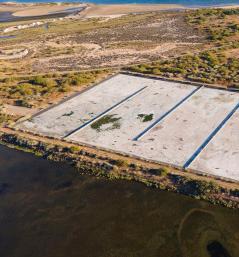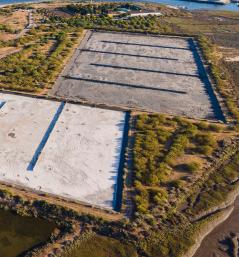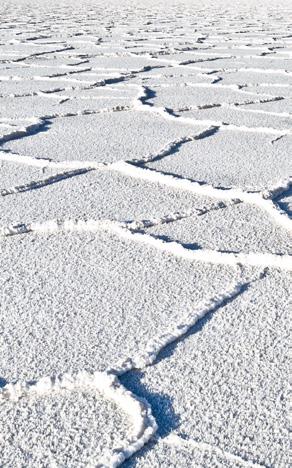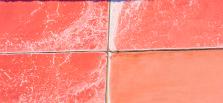
3 minute read
AS SALINAS
Widely seen across the Algarve, we take a dive into the artisenal production of salt, or more specifically Portugal’s gourmet “Flor de Sal”
Portugal has been known to produce sea salt since the Roman Empire, more notably its high quality gourmet version “Flor de Sal” a type of salt created using artisanal methods which is said to be healthier than regular refined salts. Flor de Sal is a very thin film of salt crystals which forms on the surface of the salt water and is carefully collected by hand with a special instrument, which never touches or disturbs the bottom of the salt pan, it is then dried in the sun for 5 days. As it is not washed, it retains its natural minerals which are essential to the Human body, this also gives it its unique taste. It is a rare type of salt, which is formed only on the hottest days, between July and September.
Advertisement
In the past salt has been used for cooking and of course for preservation but now, as the world discovers Flor de Sal, Chef’s are getting creative and using it as a distinct seasoning. Unlike normal salt, Flor de Sal has a higher humidity and smooth crystals making it ideal for seasoning food but not for cooking. When sprinkled over hot food like steak, the crystals melt but leave a slight crunch which adds a whole other level to the textures and flavours of the dish. Some of the worlds most well known chocolatiers even use it in their chocolates!


Prices of Flor de Sal have been increasing year after year as there is more demand, with the current price around 8 euros per kilo. Due to the natural methods used to harvest it, the quantities produced are small and exclusive. The production methods are governed by a Portuguese law which prohibits the use of machinery and pumping water to harvest the Flor de Sal. It is a 100% natural production method so the Flor de Sal is free from industrial contaminants and ensures minimal damage to the environment.


The salt season follows the rhythm of the seasons. It usually starts in March and lasts until September, time of the last salt harvest. The season is divided into two major phases: the preparation of the seas and the production of salt. The preparation of the seas takes place between the


months of March and June and includes the cleaning of mud and sludge, the repair of any damage caused by winter weather and the preparation of water. Water preparation is the process of increasing the saline concentration of the water. Besides the extraction of the salt, the biodiversity of the fauna and flora in the salt marshes is very wide, there is a bushy vegetation in the marshes and walls adapted to the high saline content of the soil, among which are the salicorn branches, an edible plant which is already widely used as a substitute for salt in salads and sautéed in other dishes.

Regarding Avifauna, most of the water birds that appear in the Ria Formosa are concentrated in the salt pans, where they benefit from vast feeding areas.
In the winter and post-nuptial migration period we can find a great abundance and diversity of species of ducks, herons, storks, spoonbills and waders, the latter being the dominant group. In late spring and early summer, the abundance of birds in the salt flats decreases significantly, but they also serve as a shelter for populations of species which depend almost exclusively on this habitat for nesting.










